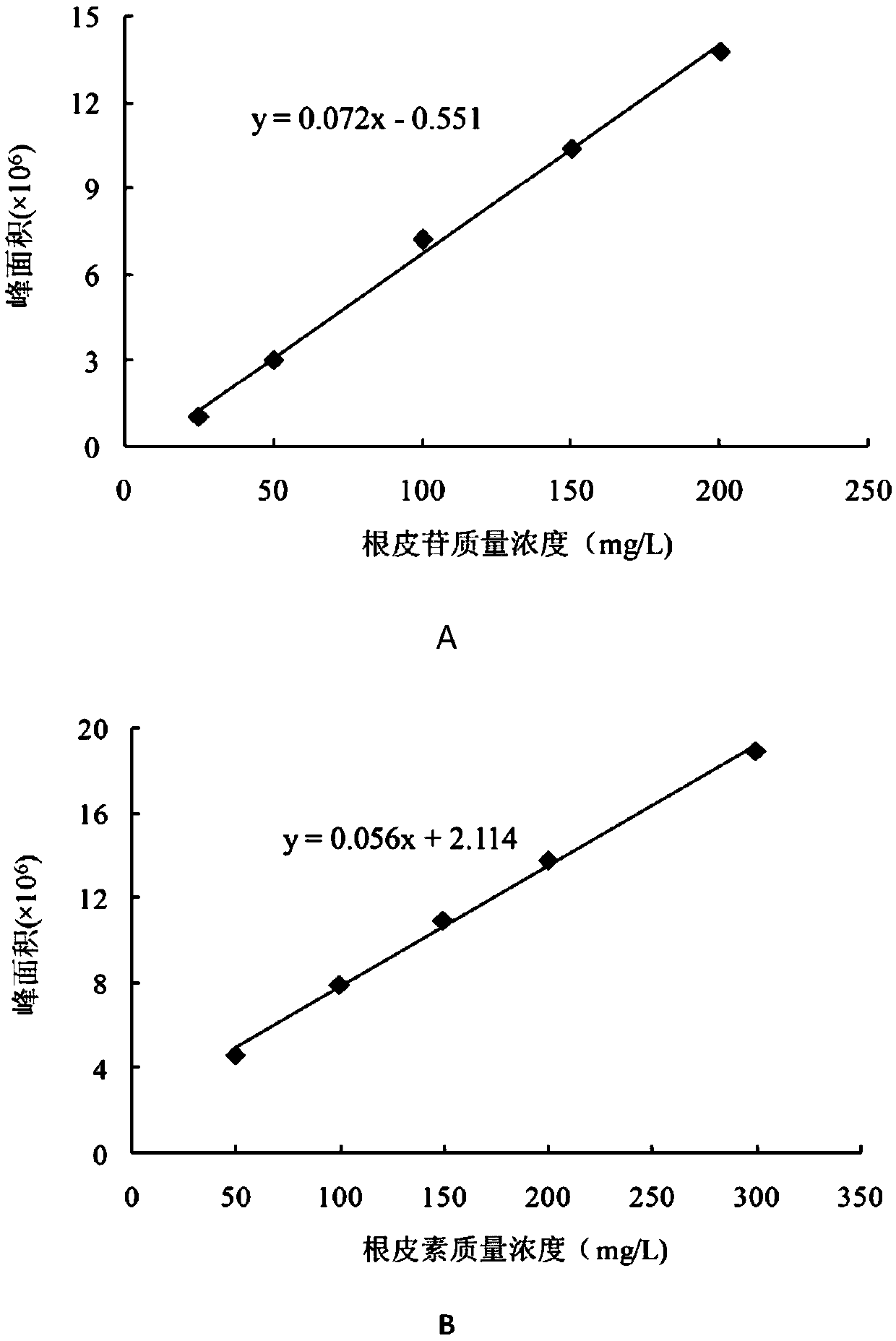Penicillium purpurescens QL-9204 and application for preparing phloretin during phlorizin conversion
A QL-9204, Penicillium violaceum technology, applied in biochemical equipment and methods, microorganism-based methods, microorganisms, etc., can solve the problems of less conversion by-products, low conversion yield, poor specificity, etc. Easy, high conversion yield, batch stable effect
- Summary
- Abstract
- Description
- Claims
- Application Information
AI Technical Summary
Problems solved by technology
Method used
Image
Examples
Embodiment 1
[0023] Example 1: Enrichment and isolation of transformed bacterial strains
[0024] Add about 50 g of crushed fresh apple peel into a 250 mL Erlenmeyer flask, and incubate at a constant temperature of 28°C for 5 days. Dilute the moldy enrichment 1 x 10 with sterile water 6 After doubling, spread it on the PDA plate medium, culture at 28°C for 3 days, pick mold colonies with different shapes and colors and transfer them to PDA slant medium, and place them at 28°C for 3 days to obtain slant strains rich in spores The 11 strains were numbered (QL-9201~QL-9211) respectively, and stored in a refrigerator at 4°C for later use.
[0025] Both the plate medium and the slant medium are potato dextrose agar medium (PDA), prepared according to the following composition and method: potatoes are washed, peeled and cut into small pieces, weighed 200g, added tap water 1000mL, boiled for 30min, 4 Filter with a layer of gauze to remove slag, make up the filtrate to 1000mL, then add 20g of su...
Embodiment 2
[0026] Example 2: Screening and classification identification of transformed strains
[0027] Use an inoculation loop to pick 2 rings of spores of the slant strains of each strain obtained in Example 1, insert them into a 100mL fermentation medium (packed in a 250mL Erlenmeyer bottle), and cultivate them for 5 days at 28°C and 200r / min constant temperature shaking conditions for enzyme production , filtered with a Buchner funnel, and the collected filtrate is the crude enzyme solution. Take 50mL of crude enzyme solution and place it in a 250mL Erlenmeyer flask, dissolve 1mg of phlorizin in 0.1mL of methanol, and then add it to the crude enzyme solution to form a reaction system (total volume is 50mL), shake at 28°C and 200r / min After down-conversion for 8 hours; take 10 mL of the conversion solution and extract twice with the same volume of ethyl acetate, combine the ethyl acetate in a round-bottomed flask, evaporate the ethyl acetate to dryness under reduced pressure, dissolv...
Embodiment 3
[0034] Embodiment 3: the application of Penicillium purpurea QL-9204 strain transforming phlorizin to generate phloretin 1
[0035] The Penicillium purpurea QL-9204 screened and obtained in Example 2 was used as the transformed bacterial species, and the crude enzyme liquid prepared by fermentation was transformed into phloridzin through seed expansion cultivation, and the molar conversion yield of phloridin was slightly higher than that in Example 2. Improve, the result of repeated experiment 3 batches has no significant difference, shows that the performance that this bacterial classification transforms phloridin to produce phloretin is stable, and concrete process step is as follows:
[0036] (1) Inoculate the slant strain of Penicillium violaceum QL-9204 preserved in a refrigerator at 4°C in fresh PDA slant medium, and culture the slant at a constant temperature of 28°C for 3 days. Described PDA slant culture medium composition and preparation method are with embodiment 1;...
PUM
 Login to View More
Login to View More Abstract
Description
Claims
Application Information
 Login to View More
Login to View More - R&D
- Intellectual Property
- Life Sciences
- Materials
- Tech Scout
- Unparalleled Data Quality
- Higher Quality Content
- 60% Fewer Hallucinations
Browse by: Latest US Patents, China's latest patents, Technical Efficacy Thesaurus, Application Domain, Technology Topic, Popular Technical Reports.
© 2025 PatSnap. All rights reserved.Legal|Privacy policy|Modern Slavery Act Transparency Statement|Sitemap|About US| Contact US: help@patsnap.com



